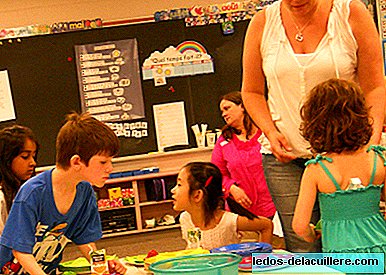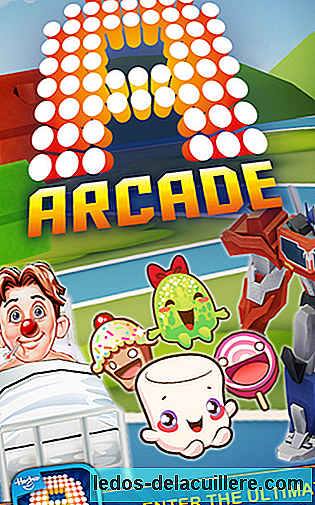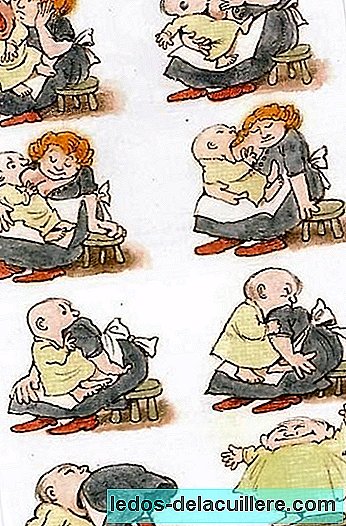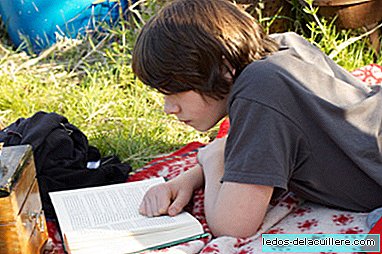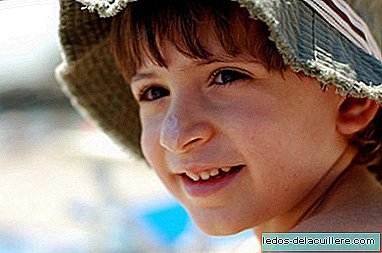
Earlier this month we already commented that in the last Congress of Dermatology and Venereology, the experts had been very sharp: 'letting children be exposed to sun radiation without protection can be considered mistreatment'. A statement that we no longer consider exaggerated when the Spanish Association Against Cancer (AECC) tells us that the incidence of melanoma worldwide increases seven percent annually.
And among the risk factors is the chronic sun exposure, and childhood burns. Children should be protected whenever they are outdoors, paying special attention to the most direct exposures (such as when we go to the beach or the pool, since on these occasions we do not wear clothes).
This is because 'to the development of skin cancer contributes accumulated sun exposure throughout life', as we read in the Fundació Hospital de Nens de Barcelona. further 'most of the solar exposure of a life is received during the first eighteen years of life, so it is essential a correct sun protection '. And now we have to ask 'if we really protect our children from the sun'.
This video of the AECC, aims to analyze the sun exposure habits of the Spanish population, and helps us remember that there are many everyday situations in which adults 'let our guard down', among them are neglecting the protection of older children (from 10 years), even though their skin is still sensitive.
The sunscreens that we apply in the case of children (over three years old) must have a protection factor of at least 15
It should be remembered that physical barriers should be used when children are outdoors, even during prolonged exposures by staying at the beach or pool (shirts, hats, umbrellas, etc.). And also that in the central hours of the day it is not advisable to expose yourself, although if we do it on occasion, we will take more precautions than usual.
The sun and its radiations
The sunlight we receive is 50% infrared radiation, 40% visible light, and 10% ultraviolet radiation. The latter is in turn divided into UVC (it does not reach the surface of the earth because it is filtered by the ozone layer), UVB (causing sunburn and the genesis of skin cancer) and UVA (produces skin photoaging).

Physical barriers or sunscreens?
In the opinion of those responsible for the Precasol company, it is not a choice, since sunscreens and clothing must be complemented.
There are sunscreens they contain chemical substances that act by absorbing ultraviolet radiation, and preventing their penetration. But within the range of protection products, we also find physical filters that reflect radiation, with a broad spectrum, it is advisable to choose broad-spectrum ptotectors because although most of the harmful effects of the sun are due to UVB rays, it also You have to protect yourself from UVA.
Effectively protect
We will choose a child line protector, which is preferably water resistant, so it can be useful when carrying out activities that result in abundant sweating. The general recommendation is to renew every two hours, but sometimes the cream should be reapplied more frequently if our child is continuously wetting.
The higher the SPF (protection factor), the more protection we provide
We know it, but I still want to remember:
The skin of children under six months It has no defense against the sun, and that is the reason why we always read or hear that very young babies should not be exposed.
The protector is applied 30 minutes before exposure, and also on cloudy days (we don't see it in the sun but it's there).
The minimum factor up to three years is 30, from that age, 15. I give my children 50.
The protectors are apply rubbing the entire body meticulously, including areas covered by clothing, and those forgotten (feet, ears, neck, ...).
Do we choose the most appropriate clothes?
It better not be neither too tight nor too dark (They protect more from UVB rays, but they are very hot). And keep in mind that the factor that most influences to decrease the passage of the amount of radiation is the thickness and narrow fabric.
Some clothes show on the label the sun protection factor that can be attributed to them based on their sun block capacity. But we can get an idea of how much sun some garments allow to see the consistency of the shadow they manage to cast on the ground when they are extended under the sun (or by observing how much light the garment passes through, by extending their fabric stretched against the window glass illuminated by the sun).
Children should also be protected with visor caps that cast shadow on the upper part of the face, and with UV protection sunglasses.

Find out to choose well
Do we have to rely on labels? If we take care of our children, who protects us as consumers?
The Organization of Consumers and Users (OCU) has made a analysis of 15 sunscreens with factor 30 or high protection to find out its real protection factor, water resistance, photostability, cosmetic properties and labeling.
The OCU study has found four brands that have a lower real protection factor than announced (30 SPF). Two of them are, in fact, of medium protection: this is the case of La Roche Posay and Biotherm. The seriousness of this fact lies in the reduction of security, and in that they are being sold at prices higher than those that would correspond
And with the laboratory results obtained, OCU gives the best ratings to creams that can be purchased in hypermarkets or perfumeries and that do not exceed 60 euros / liter.
UPGRADE: The OCU has just informed us that the three 'award-winning' creams in its analysis are: 'Babaria Solar Milk Aloe Vera' (SPF 30), it is the best in UVB and UVA sun protection, inside and outside the water, but not I should use parabens; Secondly 'Nivea Sun Protects & Bronzes, Solar Milk' (SPF 30), it has a very good quality / price ratio and excellent cosmetic properties; and 'One Hundred Solar Classic Milk' (SPF 30, in LIDL supermarkets), an acceptable protection at an economical price, the cheapest of those analyzed.
The most important conclusion is that you have to be generous in the application of these creams. Ideally, apply 35 ml (5 teaspoons) every two hours.
On the other hand, It is denounced that many of the allegations used in the labeling are free and do not contribute anything to the consumer, such as: "hypoallergenic" (does not guarantee that it cannot produce allergies, if at the same time it carries fragrances); "Dermatologically tested" (there is no standard rule to regulate it); or "paraben free" (does not guarantee that it does not contain other endocrine disruptors).
Today we have more information, and yet skin diseases directly related to the sun increase, it is known that letting the skin tan in excess is burning it, but we are still too confident. We don't play with the sun, and to protect our children we only need common sense and a few minutes a day.
Images | Bryan, Mooganic, Sherif Salama Via | Babies and More More information | Fundació Hospital de Nens, AECC In Peques and More | Do we use sunscreen well?


